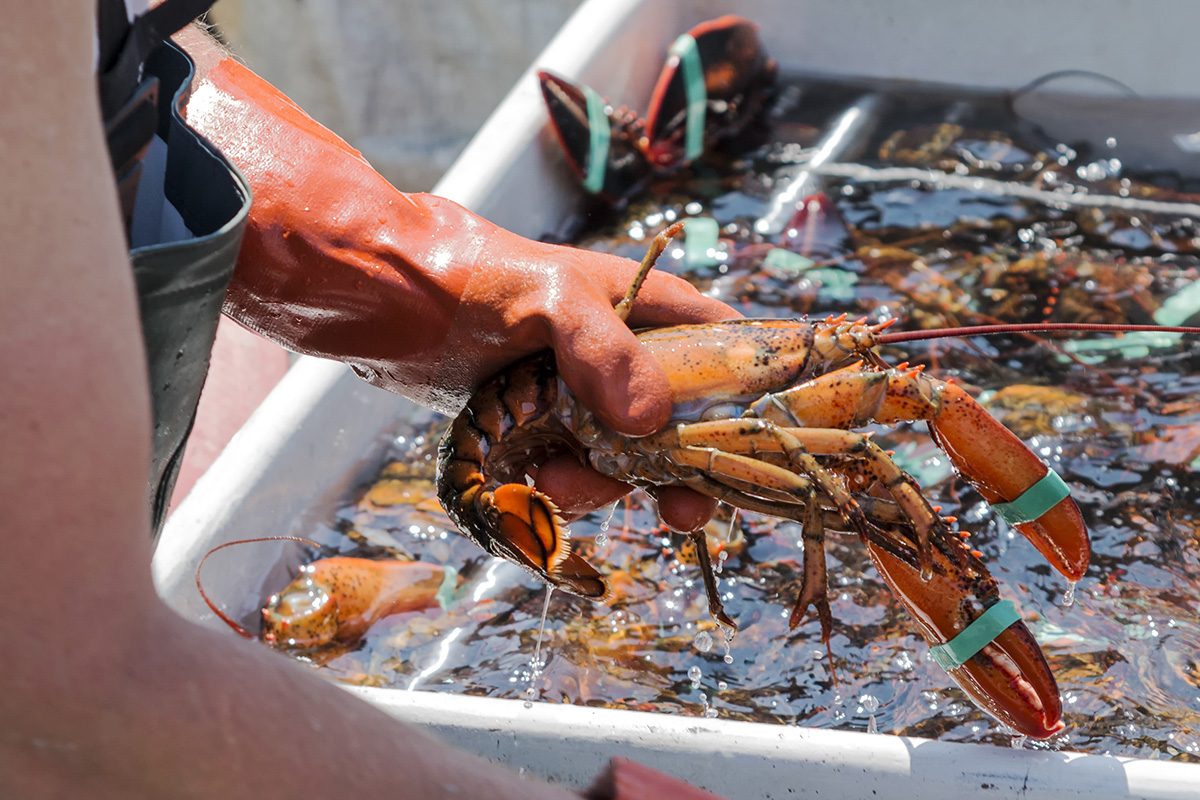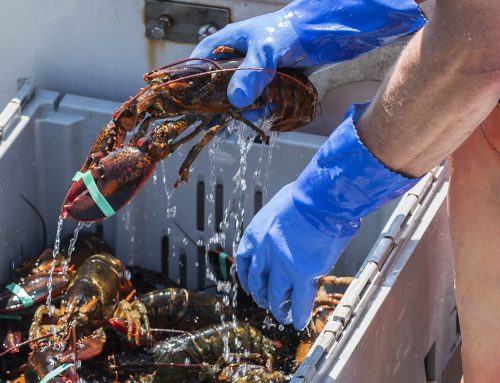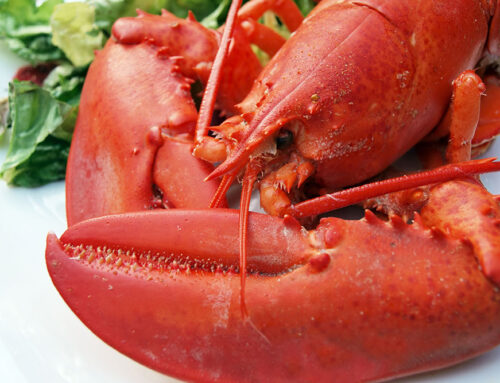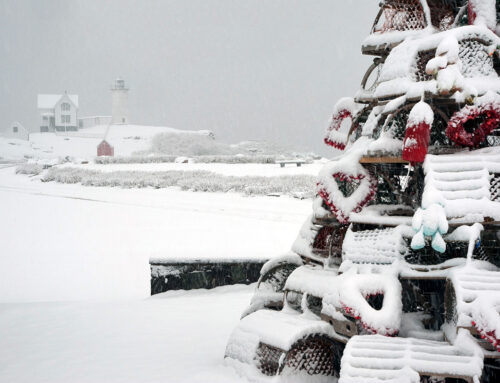Once upon a time, the Maine lobster (Homarus americanus) was caught simply by gathering them by hand along the shoreline; that’s how plentiful they were until the early 1800s.
In 1809, Ebenezer Thorndike of Swampscott, Massachusetts, invented the first lobster trap, which led to a much more efficient and economically smart way to catch lobsters.
How Lobsters Get Trapped
The lobster trap, once fashioned from wood, now made from vinyl-coated wire, varies slightly depending on its construction, but most are symbolic of a house in that they have two compartments: a “kitchen” area that lobsters access through a funnel of nylon netting and a “parlor,” the inner compartment. Lobsters are enticed to crawl up the outer nylon funnel mesh called the entry head to get at the bait bag – usually salted herring, haddock, or pogies – hanging in the kitchen.
Once they drop in, they can only go one direction through a cone of mesh, getting trapped in the parlor – unless they can squeeze through an escape vent measuring 2 inches by 6 inches for smaller crabs and lobsters. If a juvenile lobster is too small, it can easily fit through the vent, whereas an adult “keeper” (a legal, catchable lobster) cannot. The industry maintains its sustainability through this ingenious system of a trap. Watch Maine lobsterman and personality “Ask Leroy” share more details about how a trap is designed. And here’s a quick video on how a lobster gets trapped.
How Lobster Buoys Work
As early as 1850, lobster buoys (floating markers to indicate where traps were set) were made of wood, carved by hand and painted with varied colors to make them clearly identifiable. Today, they are made from hard flotation foam, but still carry out the same purpose — to assist lobstermen in locating their traps.
Each buoy has a specific color scheme, so lobstermen know which ones are theirs (while ensuring no one else will mistakenly haul their traps). Attached to the buoy is a line of rope (called warp) to a single, pair, or triple group of traps on the bottom of the ocean. The color design of the lobsterman’s buoy must be clearly distinguished on the boat hull’s two sides as well as attached to the forward topside of the boat in a way that it can be seen.
How It All Comes Together
With 6,000 lobstermen (a term which applies to both male and female lobster fishers) in Maine, everyone might be a self-employed individual beholden to no entity or corporation. But lobstermen are a tribe of conservationists at heart, proud to have been part of a built-in sustainable industry that started several hundred years ago.
Details such as the way traps are built, how egg-bearing female lobsters’ tails are V-notched and thrown back to the sea, and the way lobsters are measured from the eye socket to the carapace (only allowing “keepers” to be 3 and 1/4 inches to 5 inches) all point to a population deeply concerned with sustaining the future of their industry.
As many lobstermen will say: “We throw them back so our kids will have something to catch.” That dedicated level of care to the stock keeps lobsters from being overfished, produces record catches from year to year, and keeps generations of young people in the lobstering industry gainfully employed for years to come. To read a fascinating Q & A about sustainability and why lobstermen are essentially “farmers of the sea” read Lobster from Maine’s article.
For more fascinating tidbits of how Maine lobstering works, jump on over to Maine Lobster Festival’s blogs and be sure to put us on your calendar to visit in 2021!










